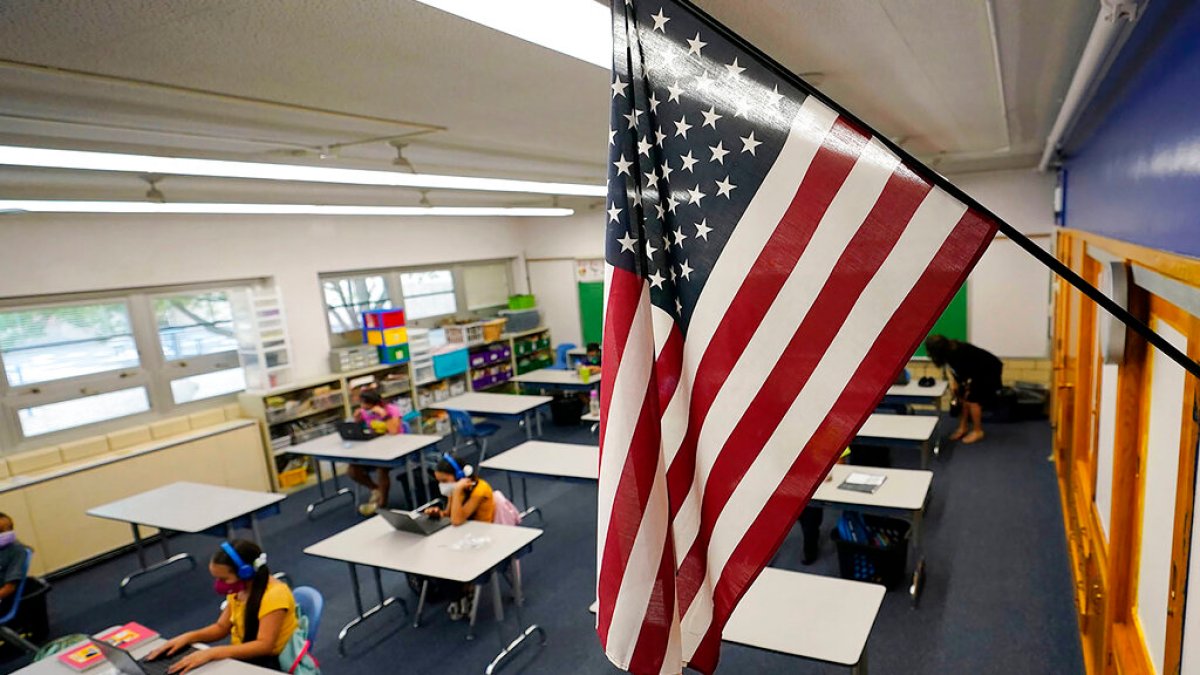
Math and reading scores among U.S. 13-year-olds fell to their lowest levels in decades, with math scores plunging by the largest margin ever recorded, according to results from a federal test known as the nation’s report card.
The findings, released Wednesday, are the latest measure of deep learning’s setbacks during the coronavirus pandemic. While earlier tests revealed the extent of America’s learning losses, the latest tests shed light on the persistence of those setbacks, dimming hopes for a quick academic recovery.
More than two years after most students returned to in-person learning, there are still “worrying signs about student achievement,” said Peggy G. Carr, commissioner of the National Center for Education Statistics, a branch of the federal Education Department.
“The ‘green shoots’ of academic recovery that we had hoped to see have not materialized,” Carr said in a statement.
In a national sample of 13-year-old students, the average math score dropped nine points between 2020 and 2023. Reading scores dropped four points. Officially known as the National Assessment of Educational Progress (NAEP), the test was administered to 8,700 students in each subject from October to December last year.
A similar setback was reported last year when NAEP released broader results showing the pandemic’s impact on America’s fourth- and eighth-graders.
Math and reading scores have been sliding since before the pandemic, but the latest results show a sharp decline that erases previous gains in the years leading up to 2012. Scores on the math test, which has been administered since 1973, are now at their lowest level since the 1990s. Reading scores are at their lowest since 2004.
Of particular concern to officials was the outsized decline among the lowest-performing students. Students across all achievement levels saw declines, but stronger students saw a slide of six to eight points, while lower-performing students saw a decline of 12 to 14 points.
There were also differences by caste. Students of nearly every race and ethnicity saw math scores slide, but the biggest drops were among Native American students, by 20 points, and among black students, by 13 points. The decline for white students was six points, while Asian American students were flat.
Dennis Forte, president and CEO of Education Trust, a nonprofit advocacy group, said the scores reflect the disproportionate impact of the pandemic’s disruption on black and Latino students and low-income families.
“Students want to succeed, attend college, start a rewarding career and reach their full academic potential,” Fort said. “But they can’t if they’re going to lose valuable ground.”
Pandemic disasters seem to last even as schools across the United States spend billions of dollars to help students catch up. The federal government sent historic sums of money to schools in 2021, allowing many to expand tutoring, summer classes and other academic recovery efforts.
But the country’s 13-year-olds, who turned 10 when the pandemic began, are still struggling, Carr said.
“My strongest suggestion is that we need to keep it,” he said. “It’s a long road ahead of us.”
Education Secretary Miguel Cardona said the results confirm what US President Joe Biden’s administration knew all along: “This pandemic will have a devastating impact on student education across the country, and it will take years of effort and investment to reverse the damage.” , as well as deal with the 11-year decline that preceded it.”
Still, Cardona said he was encouraged by signs of improvement elsewhere, with some states returning to pre-pandemic levels on their own math and reading assessments.
The test is designed to measure basic math and reading skills. Students were asked to read the passage and identify the main idea or identify specific information. In math, they were asked to do simple multiplication and tackle basic geometry, calculating, for example, the area of a square. Most of the questions were multiple choice.
When asked about their reading habits, fewer students than ever say they read for fun every day. Just 14 percent reported reading daily for pleasure — which has been linked to better social and academic outcomes — down from 27 percent in 2012. About a third of students said they never or rarely read for fun, up from 22 percent in 2012.
A troubling rise in student absenteeism in exams has also been revealed. The share of students missing five or more days of school in a month has doubled since 2020, reaching 10 percent this year. According to the results, students with fewer missed days had higher average scores in both reading and math.
Source link




